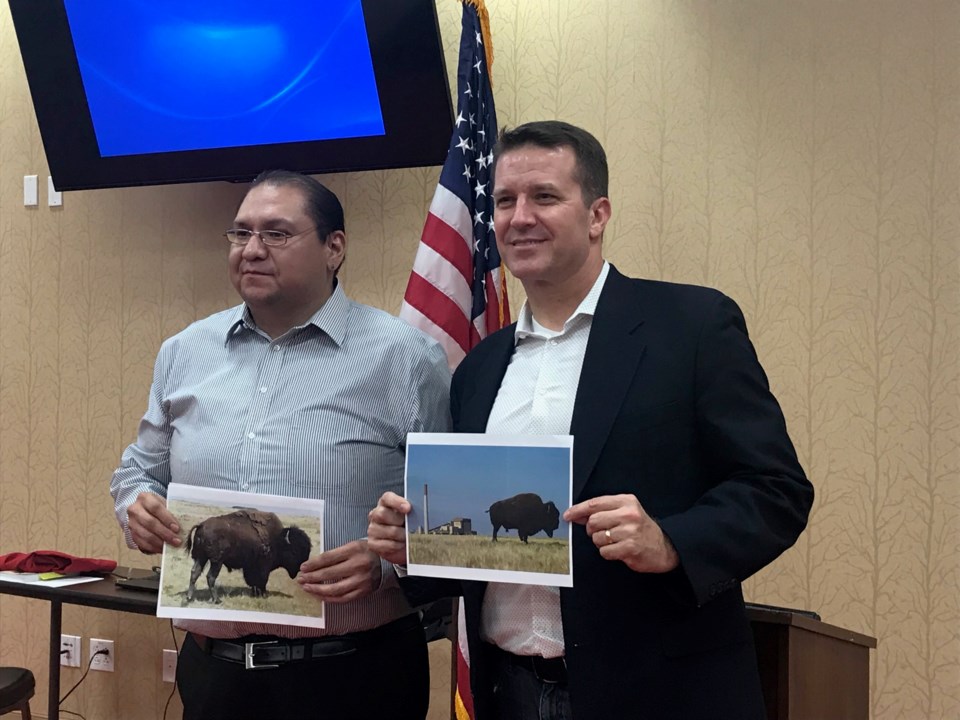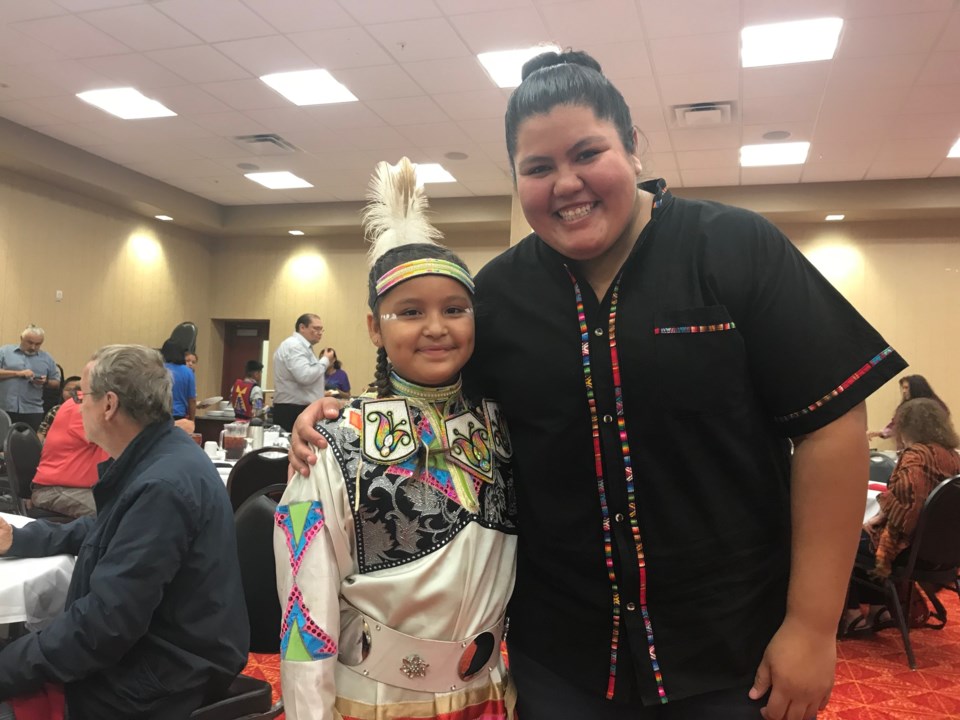Today is Native American Heritage Day, an observance created by President Barack Obama in 2009. And while the commemoration has drawn its share of criticism since its inception, the underlying intent is one Longmont has been striving to honor year-round.
This year, Longmont hoped to sign an agreement with the Northern Arapaho tribe to become the third of Longmont’s sister cities, the other two being Cuidad Guzman, Mexico, and Chino, Japan, however, the event has been delayed because of COVID. It is hoped a celebration can be held in May, said Janice Rebhan, president of the Longmont Sister Cities Association, or LSCA.
When Obama signed the resolution creating Native American Heritage Day he said, “I encourage every American to join me in observing Native American Heritage Day ... It is also important for all of us to understand the rich culture, tradition, and history of Native Americans and their status today, and to appreciate the contributions that first Americans have made and will continue to make to our nation.”
Rebhan said the sister cities agreement aims to do just that.
“The intention of the sister cities’ relationship is to provide educational opportunities for youth in both areas to not only get to know each other, but learn about different cultures and to have a better understanding between Native American kids and kids who grew up here in Longmont,” she said.
“The history is not very positive. We (the United States) have had troubled relations and this is an opportunity for us to change that not only for youth but for adults. We are starting with children because children tend to be more open minded and interested in exploring different cultures.”
The recorded history of the Arapaho tribe begins in the early 1800s when it settled the Front Range area, said Eric Mason, curator of research at the Longmont Museum.
Soon after moving into the area the tribe acquired horses, which allowed it to travel the plains and hunt bison, Mason said.
“This area, particularly the St. Vrain and Boulder valleys were often areas where they (the Arapaho tribe) would spend part of the year,” he said.
In the historical record, Mason said the Arapaho were documented as trading at forts along the rivers, including the St. Vrain.
In the 1860s, as the Colorado Gold Rush began, miners began building cabins in the area, displacing local tribes from the Boulder Valley. In 1864, the Cheyene and Arapaho tribes were camped on Sand Creek. The 675th Calary attacked the tribes, sparking several years of open warfare, Mason said.
In 1868, the last major battle at Summit Springs occurred resulting in a treaty being signed that forced the Arapaho to relinquish their land in the Front Range area, moving them to reservations in Oklahoma and Wyoming, Mason said.
The LSCA hopes by starting relationships with each culture’s youth, some of that strained history can be replaced by progress and a better future, not only for the Arapaho and Longmont youth, but also for students from Japan and Mexico.
“We hope that we can value each other and our own experiences as well as theirs to appreciate each other’s cultures, to eliminate some stereotypes that exist and mostly to provide opportunities for their youth and for ours to widen their horizons,” Rebhan said.
No one from the Northern Arapaho at the Wind River Reservation could be reached for comment.
The reservation is in rural Wyoming and the tribe is struggling to provide medical resources to its people, Rebhan said. The LSCA is accepting donations to help the Northern Arapaho through the holiday season.
The day after Thanksgiving was marked as Native American Heritage Day in 2009 by former President Barack Obama. The day, however, is only recognized by 184 of the 567 tribes in 2017, according to Native Hope blog.
In 1990, former President George H.W. Bush signed a joint congressional resolution proclaiming November as Native American Heritage Month. “Similar proclamations have been issued every year since 1994 to recognize what is now called "American Indian and Alaska Native Heritage Month." This Facts for Features presents statistics for American Indians and Alaska Natives, one of the six major race categories defined by the U.S. Office of Management and Budget,” states the United States Census Bureau website.
The US now recognizes 574 Indian tribes, according to the United States Census Bureau website.
When Obama signed the the resolution naming Native American Heritage Day the Friday after Thanksgiving he said, “I encourage every American to join me in observing Native American Heritage Day....It is also important for all of us to understand the rich culture, tradition, and history of Native Americans and their status today, and to appreciate the contributions that First Americans have made and will continue to make to our Nation.”
However, not everyone feels that the chosen day does that. "As a Native American, I feel slighted. The day after Thanksgiving? Almost an afterthought. With November being Native American Heritage Month, there are 28 other days to select from with of course Thanksgiving having its long established day to itself. Why must we take a backseat to Thanksgiving? Why not the day before Thanksgiving?” Brian Perry, a citizen of the Chickasaw Nation of Oklahoma and a Native Hope ambassador, wrote in a blog in 2017.
Longmont and the Front Range has its own rich Native American history, specifically with the Arapaho tribe. Regardless of the national day of recognition, Longmont has made strides to build a relationship with the Northern Arapaho tribe.
This year the city of Longmont was set to sign an agreement with the Northern Arapaho tribe to become the third of Longmont’s Sister Cities, the other two being Cuidad Guzman, Mexico and Chino, Japan.
The agreements have been made, however, due to COVID the contract and celebration has not occurred. Janice Rebhan , president of the Longmont Sister Cities Association, or LSCA, said that they hope to hold the celebration in May of 2021.
 Mayor Bagley meets with Northern Arapaho tribe leaders at Wind River in Wyoming. (photo courtesy of Longmont Sister Cities Association)
Mayor Bagley meets with Northern Arapaho tribe leaders at Wind River in Wyoming. (photo courtesy of Longmont Sister Cities Association)
“The intention of the Sister Cities’ relationship is to provide educational opportunities for youth in both areas to not only get to know each other but learn about different cultures and to have a better understanding between Native American kids and kids who grew up here in Longmont,” Rebhan said.
“The history is not very positive. We (the US) have had troubled relations and this is an opportunity for us to change that not only for youth but for adults,” Rebhan said. “We are starting with children because children tend to be more open minded and interested in exploring different cultures.”
The recorded history of the Arapaho tribe begins in the early 1800s when they settled the Front Range area, said Eric Mason, curator of research at the Longmont Museum.
Soon after moving into the area the tribe acquired horses which allowed them to travel the plains and hunt bison, Mason said.
“This area, particularly the St. Vrain and Boulder valleys were often areas where they (the Arapaho tribe) would spend part of the year,” Mason said.
In the historical record, Mason said the Arapaho were documented as trading with traders in forts along the rivers, including the St. Vrain.
In the 1860s, as the Colorado Gold Rush began, miners began building cabins in the area, displacing local tribes from the Boulder Valley. In 1864, the Cheyene and Arapaho tribes were camped on Sand Creek. The 675th Calvary attacked the tribes, sparking several years of open warfare, Mason said.
In 1868, the last major battle at Summit Springs occurred resulting in a treaty being signed that forced the Arapaho to relinquish their land in the Front Range area, moving them to reservations in Oklahoma and Wyoming, Mason said.
Although a strained history, LSCA hopes that by starting with each culture’s youth, progress can be made to a better future, not only for the Arapaho and Longmont youth but also for students from Japan and Mexico.
“We hope that we can value each other and our own experiences as well as theirs to appreciate each other’s cultures, to eliminate some stereotypes that exist and mostly to provide opportunities for their youth and for ours to widen their horizons,” Rebhan said.
No one from the Northern Arapaho at the Wind River Reservation was able to be contacted at the time of publication.
According to Rebhan, the reservation is in a rural part of Wyoming and the tribe is struggling to provide medical resources to its people. Currently the LSCA is accepting donations to help the Northern Arapaho through the holiday season.



